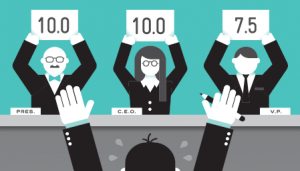
In her blog, Creativity: Why it matters, Vivian discusses the importance of creativity to the workplace. She discusses the uncertainty which managers try to avoid by not encouraging creativity as the workplace become more diverse. She notes that creativity can act as a more effective motivator, shifting from extrinsic reward systems towards intrinsic reward systems; encouraging creativity can increase employee job satisfaction, thus bringing better results.2
Vivian has provided very interesting and valid points; however, in addition, I will further discuss the increase in productivity which creativity brings to the company. Creativity allows employees to work without boundaries and constraints: traditional practices will be forgotten and every step in the new process will be up for questioning3. Enabling employees to question the process which they do their work will allow them to think of more efficient ways to do them, therefore increasing productivity.

Creativity will encourage people to stop underestimating their ideas1 and allow employees to feel an empowerment to change their workplace3. Sometimes one simple idea can make things easier1. The empowerment will encourage further discussions and analysis into solving issues3. Solutions developed by a number of motivated experts means that there will be more effective solutions because many perspectives will be heavily considered in the process of generating solutions.
The fear of failure will be removed and people will have a lower level of uncertainty avoidance in creative environments3. When people have the “freedom to fail,” they will learn more about their field through their failures, hence their level of expertise will rise. A greater level of expertise means a greater potential for creativity, which in turn will lead to more effective ideas.
Word Count: 275
References
1 Brown, N. (2008, August 5). Why you absolutely need creative employees. Retrieved April 2, 2017, from Fortune website: http://fortune.com/2015/08/05/nancy-brown-creative-thinking-at-work/
2 Guo, V. (2017, January 31). Creativity: Why it matters [Blog post]. Retrieved from Vivian Guo’s Blog: https://blogs.ubc.ca/vguo/2017/01/31/creativity-why-it-matters/
3 Jones, B. (2014, June 19). 5 ways creativity leads to productivity. Retrieved April 2, 2017, from Entrepreneur website: https://www.entrepreneur.com/article/234997
Image Source
Low poly lightbulb as creativity and idea concept [Image]. (2016, February 19). Retrieved from http://blog.socialcast.com/3-ideas-to-get-more-creative-input-from-group-brainstorming/
[Embracing passion and creativity]. (2015, June 15). Retrieved from http://www.blogs.jbs.cam.ac.uk/socialinnovation/2015/06/26/embracing-passion-and-creativity/






